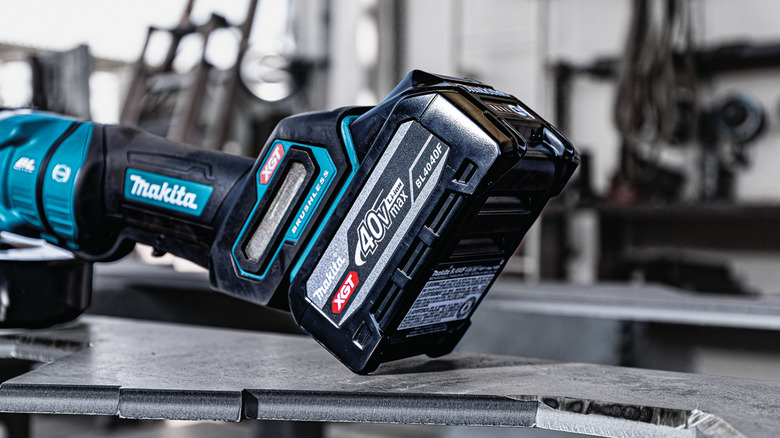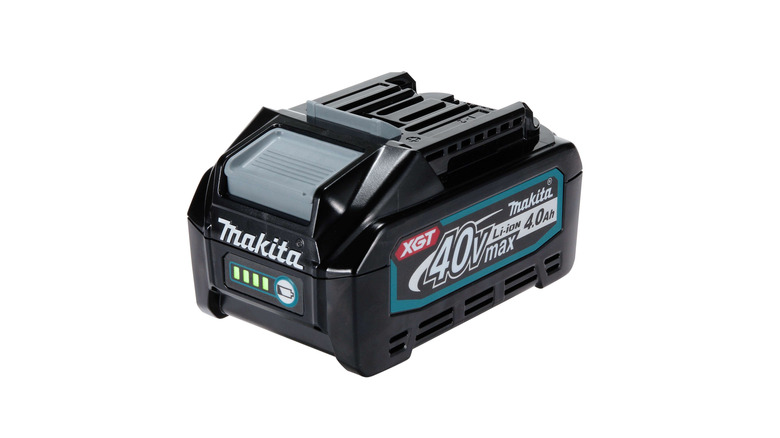How Does Makita's New 40V Max XGT High Power Battery Compare To The Standard Version?
When it comes to Makita's battery systems, you'll often encounter three options: Makita's XGT, LXT, and CXT. Among them, the XGT batteries deliver the most power, making them well-suited for heavy-duty power tools. As of this writing, there are five XGT batteries you can choose from, all of which can work with any of your XGT tools: the 40V max XGT 8Ah battery, the 5Ah version, the 4Ah, the 2.5Ah, and the latest model, the 4Ah high power.
It's easy to pick an XGT battery for your tool if you're only looking at the capacity. Just go with the 8Ah, as it can run about thrice as long as the 2.5Ah, or the 5Ah, as it can last a bit longer than the 4Ah. But what about the high-power version? How is it different from the standard 4Ah model? We'll take a look at the side-by-side comparison between the new 40V max XGT 4Ah high power battery and the 4Ah standard battery.
High power vs. standard Makita 40 max XGT battery
The 40V max XGT 4.0Ah Battery (BL4040) was introduced in April 2021, along with the initial lineup of Makita's 40V XGT products. The 40V max XGT 4.0Ah High Power Battery (BL4040F), on the other hand, is the newest addition to the 40V max XGT batteries. It was announced in November 2024.
While the standard version is older, the two batteries actually share plenty of similarities. For one, they come in the exact same size and weight, so you can readily interchange them without noticing any difference physically. The two batteries have the same charging speed, too. When connected to the 40V Max XGT Rapid Optimum Charger, it would only take 45 minutes to fully charge either one. Both batteries also include similar built-in battery charge level indicators with four green LEDs, so you can tell at a glance when the battery is in need of a recharge. And since they're part of the XGT line, they're both designed to withstand impacts and shocks.
So what sets the high-power battery apart from its standard counterpart? From its name, the high-power version is more powerful — specifically, 35% higher than the standard battery. This means it can do tougher and more demanding jobs, like drilling holes into cement instead of wood and cutting thick, dense materials, without the tool struggling or slowing down. Even with more power delivery, it stays cooler than the standard battery by about 30%.
If you're often doing heavy tasks, it's better to go with the high-power version to increase your productivity. If you typically take on light tasks like simple furniture assembly and routine lawn mowing, either would work just fine.

